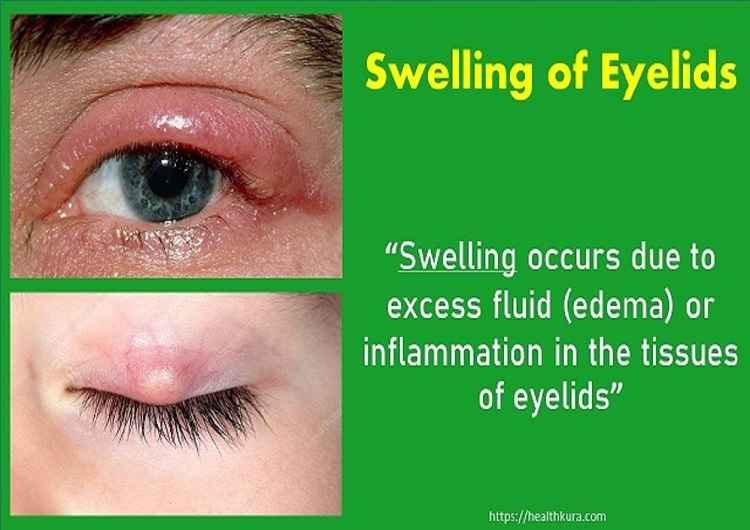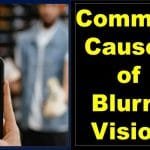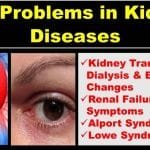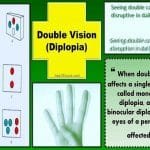All About Swollen Eyelids and Eyelid Bump: Introduction, Symptoms, Causes, and Treatment.
Swelling of eyelids or eyelid bump
Eyelid bumps and swollen eyelids are common ocular disorders. Swelling occurs due to excess fluid (edema) or inflammation in the tissues of the eyelids.
Both upper and lower eyelids can get affected by painless or painful swelling of the eyelids (bump). It is also known as the inflamed eyelid, sore eyelid, eyelid bump, or red eyelid.

Eyelid swelling can be a sign of simple blepharitis or more serious, sight-threatening eye conditions, such as ocular herpes, and orbital cellulitis. Likewise, chalazion and stye lead to eyelid bumps.
The Difference Between Puffy eyes and Swollen Eyelids
Although the term “puffy eyes” is interchangeably used with “swollen eyes”, these are two different ocular conditions.
The puffy eye is related to the external physical characteristics of eyelids which may be inherited or caused by other factors such as lack of sleep, or crying. Other common factors responsible for puffy eyes are stress, allergies, and fatigue.
The puffy eye can be a source of discomfort but it typically has no other symptoms associated with it and can be safely treated at home.
The spa treatment like placing cucumber slices over the eyes and taking antihistamine help to safely and effectively reduce the puffiness of eyelids.
The common causes of puffy eyes are:
- Fluid retention due to excessive intake of salt
- Allergies
- Irritations in the eyelids due to cosmetics
- Sleeplessness
- Dehydration
- Stress
- Aging
- Crying
- Inherited
The puffy eyelid heals on its own without any treatment. Swollen eyelids and eyelid bumps, however, require medical attention to treat effectively. Knowing the difference between these two conditions helps to seek medical attention and safely manage the causes of these ocular disorders.
Symptoms of swollen eyelids and Eyelid Bump
The symptoms of eyelid swelling or eyelid bump might vary depending on the underlying causes. One may experience one or more of the following symptoms in addition to a swelling of eyelids:
- Itching of eyes
- Extreme intolerance of light (photophobia)
- Eye irritation or scratchy sensation
- Watering eyes
- Redness of eyelids and/or conjunctiva
- Ocular discharge
- Blurry vision
- Ocular pain
Common causes of swollen eyelids and eyelid bump
Blepharitis
In blepharitis, a swollen eyelid and a yellow or white crust are noticed along the eyelashes. It causes itching, burning sensation, redness, and sores of eyelids. Blepharitis is usually seen in both eyes. Your eye doctor examines blepharitis, its types, and severity before starting treatment.
Overnight contact lens wear
If you forget to remove your contact lenses before sleeping and swimming, you may experience swollen eyelids along with redness and blurry vision. So, always remember to remove contacts before sleep and swimming.
Ocular allergy
Allergens from animal dander, pollen, dust, or medicines may lead to swelling of eyelids. You may take an antihistamine to control the inflammation. If the swelling doesn’t go away after one or two days, see a doctor.
Chalazion
A chalazion is the main cause of eyelid bumps. It is the enlargement of the clogged oil gland inside the eyelid. It typically affects one eyelid either the upper or lower eyelid of one eye. But sometimes, multiple chalazia may affect both eyelids of both eyes. It is a painless swelling of the eyelid and it expresses on its own after several days.
You can try warm compression at home to help a chalazion heal more quickly. If the size of a chalazion is large, it can interfere with vision due to induced astigmatism from the continuous pressing of the cornea. You should contact an eye doctor if chalazion doesn’t go away with warm compression for a few days.
Conjunctivitis
Also known as pink eye, conjunctivitis is an inflammation of the clear, thin transparent lining of eyelids and eyeballs (conjunctiva). Pain, itching, watering, and swollen eyelids are the characteristic features of conjunctivitis.
It may be viral, bacterial, or allergic. You should keep your eyes clean and free of makeup, and avoid touching or rubbing the eye. Your eye doctor will prescribe antibiotics if the symptoms become worse.
Stye or hordeolum
This is another main cause of eyelid bumps. A hordeolum or stye is an infection of a tear gland or oil gland in the eyelid. It usually shows a symptom of painful swollen lumps, redness, and itchy eyes. Warm compression helps to reduce the pain and reduce the size of the swollen mass.
You should avoid cosmetic products until hordeolum disappears. it’s not healthy to pop the stye because this may spread the infection. You need to use antibiotics to effectively treat the stye.
Injury
It is another common cause of eyelid swelling. Just like an injury to other parts of the body, an eye injury can have symptoms of pain, redness, and swollen eyelids. Although mild injury heals on its own, severe injury worsens with time.
If the injury is due to harmful chemicals, it is an ocular emergence condition. So, immediate medical intervention is required in such cases.
Insect bite
Bug or insect bite leads to swollen eyelids along with itching, redness, and watering. Visit your eye doctor if the swelling is accompanied by intense pain and other symptoms like headache, fever, and rashes in other parts of the body.
Less common causes of eyelid swelling
Preseptal Cellulitis
Preseptal cellulitis is the infection of the tissue around the outside of the eye. This is accompanied by pain, redness, and fever. It usually occurs in one eye and caused by a bacterial infection. It is less serious ocular tissue inflammation compared to orbital cellulitis.
Orbital cellulitis
It is the infection of the tissue in and around the eye socket. Redness, bulging of eyeballs, and pain in the ocular movement are seen along with swollen eyelids. It occurs as a unilateral infection but can spread to other eyes as well if not treated. It is one of the ocular emergencies and requires immediate medical intervention.
Ocular herpes
It is the herpes infection in and around the eyes. It is most commonly found in children, although it can happen to anyone. It looks like a pink eye with similar symptoms but does not always produce distinct lesions. The virus remains in the body and there is no permanent cure for this viral ocular infection. But antiviral medications help to manage the symptoms.
Blocked tear duct
Tear duct blockage prevents eyes from draining tears properly. As a result, redness, pain, and eyelid swelling occur. Newborns and infants are vulnerable to tear duct blockage and the symptom improves by the time they are one year old.
Most of the time, lacrimal duct obstruction is not harmful. Gentle lacrimal massage and warm compression can ease the swollen eyelids and help the tear duct function properly.
If nasolacrimal duct obstruction is occurring due to infection, there will be painful swelling of the eyelids. You should seek medical advice to treat the infected lacrimal duct to prevent swelling of eyelids and further damage to the lacrimal drainage system.
Thyroid eye disease
Puffy or Swollen eyelids sometimes indicate the underactive or overactive thyroid gland. It usually affects both eyes. In severe thyroid dysfunction, the ocular movement may become restricted and the eyes may suffer from severe dryness due to proptosis and incomplete eyelid closure during sleep.
Eye cancer
In rare cases, a progressively increasing size of the swollen eyelid can be a sign of ocular cancer or melanoma of the eye. melanoma needs to be diagnosed by medical tests and the treatment options range from radiation therapy to laser therapy or surgery.
Systemic disorders
Edema or fluid retention is a symptom of many systemic diseases like preeclampsia, kidney disease, liver failure, and cardiovascular diseases. Unusual swelling of eyelids, along with swelling of other body parts is noticed.
Swollen eyelid treatment Eyelid bump treatment
The treatment depends on the cause of swollen eyelids and eyelid bumps. Swelling due to allergies can be treated effectively with antihistamine eye drops or oral allergy medicines. Severe eye allergy, however, requires mild steroid eye drops.
Similarly, conjunctivitis and herpes keratitis are managed with antibiotics, anti-viral medications, or anti-inflammatory eye drops and ointments. Ocular emergencies like orbital cellulitis and chemical injury need immediate medical interventions.
Swollen eyelids take anywhere from a couple of days to several weeks to clear up depending upon the cause. Be sure to stay away from allergens, stress, and take a rest.
When to see a doctor
You can manage swollen eyelids or bumps at home, especially if they are caused by stress, allergies, or lack of sleep. You can do the following things immediately at home:
- Do not rub the eyes
- Rinse your eyes with normal saline solution if there is discharge
- Apply a cool compress over the eyes
- Discontinue contact lenses (if you wear them)
- Elevate your head while sleeping to decrease fluid retention
- Treat your dry eyes
You should seek medical advice if the swollen eyelids don’t get better with home remedies or if they are accompanied by pain, blurred vision, floaters, foreign body sensation, or restricted ocular motility.
Sources






